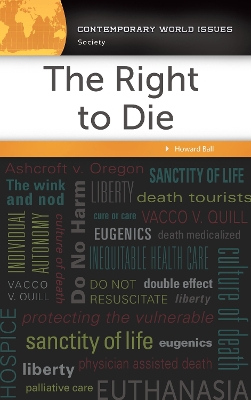Contemporary World Issues
3 total works
This book presents the background and history of genocide, the key issues associated with this worldwide crime, and the problems inherent in preventing its occurrence.
In 1948, the UN General Assembly adopted the Convention on the Prevention and Punishment of the Crime of Genocide (CPPCG), legally defining the crime of genocide for the first time. Amazingly, the United States did not ratify this international agreement until nearly 40 years later, when President Reagan finally signed the genocide convention bill. Attempts to enforce international law against genocide did not begin until the 1990s.
Genocide: A Reference Handbook examines the antecedents of the term "genocide" in the mid-19th century and explains the current challenges of preventing or even stopping genocide, including the nation-state system and principles of state sovereignty. The author documents how crimes of genocide have continued unchecked, and asserts that a collective commitment to humanitarian intervention is the only way to address this ongoing problem.
- Provides a chronological timeline of genocide from 1900 to present day
- Includes related content such as brief biographies of major 20th century leaders accused of genocide, bilateral immunity agreements involving the United States from 2003 to 2009, and a directory of organizations that have worked to prevent or end genocide
- Addresses key issues such as the motivations for genocide; the perpetrators, victims, and bystanders; and the eight stages of genocide
- Contains an annotative bibliography of print and nonprint resources
This book provides a comprehensive and contemporary examination of the right-to-die issues facing society now that vast improvements in public health care and medicine have resulted in people not only living longer but taking much longer to die-often in great pain and suffering.
In 1900, the average age at which people died in America was 47 years of age; the primary causes of death were tuberculosis and other respiratory illnesses. In the 21st century, as a result of better health care and working conditions as well as advances in medical technology, we live much longer-as of 2016, about 80 years. A much larger proportion of Americans now die from chronic diseases that generally appear at an advanced age, such as heart disease, cancer, or chronic obstructive pulmonary disease (COPD). Should this fundamental change in human lifespan alter how society and government view right-to-die legislation? What are the pros and cons of giving a mentally competent person who is terminally ill and in great pain the right to end his or her life?
The Right to Die: A Reference Handbook provides a complete examination of right-to-die issues in the United States that dissects the complex arguments for and against a person's liberty to receive a physician's assistance to hasten death. It covers the legal aspects and the politics of the right-to-die controversy, analyzes the battles over the right to die in state and federal courts, and supplies primary source documents that illustrate the political, medical, legal, religious, and ethical landscape of the right to die. Additionally, the book examines how members of our society typically die has changed in the past 150 years and how the practice of medicine has evolved over that time; explains why the right to die is strongly opposed by many religious groups as well as members of the medical profession; considers the "slippery slope" argument against doctor-assisted suicide; and identifies the reasons that the disabled, the poor, the elderly and infirm, and some members of ethnic, racial, and religious minority groups typically fear physician-assisted death.
- Provides readers a clear picture of the complexity of the right-to-die controversy as it has emerged in the courts and in the political branches of state and federal governments
- Presents perspectives written by advocates for and against the right to die that give personal insight into the reasons for their positions
- Supplies a selection of primary source documents that represent viewpoints from both sides of the right-to-die controversy
- Includes a fully annotated chapter that provides readers with secondary resources such as books, journal articles, and medical reports with which to explore the issue further
A legal scholar details the creation and function of the Department of Homeland Security, placing it in historical context.
A concept so important, it is among the first words of the U.S. Constitution, the defense of our borders is as essential today as it was more than 200 years ago. In response to the breakdown of that function on September 11, 2001, the administration sponsored the USA PATRIOT Act, and created the Office of Homeland Security. Critics of those actions claim these measures give too much power to the government and impermissibly impinge on civil liberties; supporters claim they are necessary for national security.
From the 1798 Alien and Sedition Acts to the present, the government has aggressively discharged its duty to ensure domestic tranquility, including jailing dissidents and forcing Japanese American citizens into internment camps. In this book, a leading legal scholar explains in detail the present federal actions and places them in historical context.
- A chronology of federal responses to homeland security threats from 1798 to the present
- Primary source documents that show present and historical federal responses to internal and external threats


